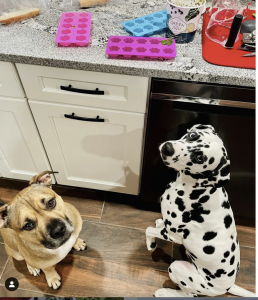Essential Tips for Emergency Preparedness and Pet Food
In Connecticut, we experienced the impact of a tropical storm in 2020 that left many without power for days. This highlights the importance of emergency preparedness, particularly when it comes to pet food and supplies. In this guide, we’ll provide valuable advice and practical solutions to ensure you’re well-equipped for any future power outages. Discover the best practices recommended by our team.
Best Practices for Emergency Preparedness
Ensure Access to Clean Water: Having clean and safe water readily available for both you and your pets is crucial during emergencies. Dehydration and heat-related concerns can pose serious risks, especially in the summertime. Remember to rotate your emergency water supply every 6-12 months to maintain freshness.
Create a First Aid Kit: Prepare a comprehensive first aid kit that includes essential items such as emergency bandages, medicines, and antibiotic ointment. Additionally, include specific items for your pets like nail clippers, extra gauze, veterinary wrap tape, and styptic powder. Ensure you regularly check and replace supplies every 6 months to avoid expired products.
Medications & Calming Aids: Consider including calming aids, such as CBD products, in your emergency kit, along with any necessary prescription medications for you and your pets. Explore options like those offered by Super Snouts to provide extra comfort during stressful situations.
Leash, Collar & ID Tag: Always keep spare leashes, collars, and ID tags handy. You never know when you might need an extra one, especially during emergencies.
Poop Bags: Pack an ample supply of poop bags to ensure easy and sanitary clean-up and disposal, even during challenging circumstances.
Pest Control: Include pet-friendly pest control solutions like Wondercide to keep pests at bay, safeguarding both you and your pets during emergencies.
Blankets and Towels: Don’t forget to include blankets and towels in your emergency preparedness kit. These versatile items are essential for both you and your pets in various situations.
Emergency Food Options: While it’s advisable to include a small bag of your pet’s kibble in your emergency kit, it may not always be feasible, especially for raw or fresh food feeders. Explore alternative options such as:
- Canned & Wet Foods:
- Freeze Dried Foods: Freeze-dried foods offer a seamless transition regardless of whether you feed kibble, raw, or anything in between. They are lightweight, require minimal space, and offer nutrient-dense options.
- Pros: Lightweight, space-efficient, nutrient-dense, sturdy packaging, easy to switch, suitable for picky eaters and sensitivities. Read more here!
- Cons: Potentially higher cost in some cases. Recommended Brands: Northwest Naturals, SmallBatch, (or Feline Natural for the kitties!)
- For raw feeders, freeze-dried food is an ideal choice for emergency preparedness. It is a realistic, cost-effective, and nutrient-dense option that can be used as treats, emergency meals, or when you forget to thaw or purchase food from the store. The chances of digestive upset are minimal, even when transitioning abruptly from kibble or raw diets.
- By incorporating freeze-dried food into your pet’s regular diet or using it as treats, you can provide affordable and enjoyable options for your pets. During the recent power outage, we successfully relied on these products in our weekly rotations.
Conclusion
Preparing for emergencies requires careful planning, especially when it comes to pet food and supplies. By following these essential tips, you’ll be well-prepared for any emergency that you may be faced with.
Looking for more? Check out our boredom-buster ideas here: Keeping Your Pets Entertained






